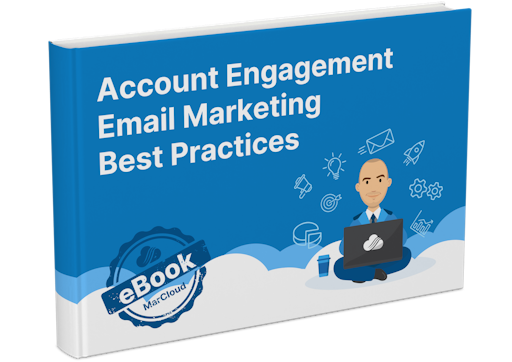This blog was written before Pardot was renamed to Marketing Cloud Account Engagement. You can read more about the name change and what it means here.
Understanding email deliverability is an important part of knowing how to expertly manage your email marketing activity.
An email sent via Pardot can be successfully delivered but this doesn’t automatically mean that it has arrived in the recipient’s inbox. This is because a recipient’s email address may be valid and authentic, however, the email itself lands in the spam folder.
With this in mind, we can say that email delivery’ relates to the health of our data, while email deliverability' is dependent on our Sender Score.
Jump to the relevant sections below:
- What is a Sender Score?
- Which factors can harm email deliverability?
- How to avoid email deliverability issues
- How to identify if there is an issue
What is a Sender Score?
As Salesforce puts it;
Sender Score grades the reputation of outgoing mail servers on a scale of 0 to 100. The higher the score, the more trustworthy the sender. Mail servers often check your Sender Score before deciding what to do with your emails — if your score is low, your emails are more likely to end up in junk or bulk folders, or be blocked altogether.’
In a nutshell, our Sender Score is awarded based on how well we follow email marketing best practices by avoiding SPAM-type messages and ensuring that we have the correct opt-in processes in place.
Which factors can harm email deliverability?
Within email marketing, the acronym ISP’ refers to the major email providers: Gmail, Outlook, Hotmail, etc. If we want to avoid the dreaded junk folder, we need to keep these ISPs happy! Over 100 billion spam messages are sent daily so ISPs need to be on top of their game to filter them out and it’s our job to help them figure out that ours is a non-spammy communication.
How to avoid email deliverability issues
Set up DMARC, DKIM, SPF Authentication
Prevent emails from being blocked or sent to spam by publishing a DMARC record. This allows a sender to indicate that their messages are protected by SPF and/or DKIM, and tells a receiver what to do if neither of those authentication methods passes – such as to send to junk or reject the message.
To achieve the best deliverability, each domain that we want to use to send emails needs a domain key (DKIM). This is generated in Pardot and is an email authentication technique that allows the receiver to check that an email was actually sent and authorised by the domain owner.
An SPF record lists all authorised hostnames or IP addresses that are permitted to send email on behalf of your domain. This validates the email and reduces the risk of it landing in spam.
Choose the domain suffix wisely
There are different types of top-level domains (TLD). The most recognised are probably .com, .org and .net and on top of this we have country code code top-level domains for example .co.uk, .us, .de.
Each TLD has a reputation and not only can this harm your search engine visibility but also your email sender score. Spamhaus calculates a badness index’ for each TLD which can be checked here.
The TLD alone won’t necessarily cause our emails to be seen as spam, however, it can contribute to a lower score and when combined with other negative factors the overall score could result in the email not reaching the inbox.
Where possible, try to send emails from a domain that uses one of the following, most trustworthy suffixes: com, co, net, org, edu, gov.
How to identify if there is an issue
Pardot Advanced Email Analytics (available in: Pardot Plus, Advanced, and Premium Editions and for an additional cost in: Pardot Growth Edition) enables us to carry out a spam analysis of our email content.
Pardot tests email content against most major desktop and server-side spam filters, including: Barracuda, Outlook, Gmail, Sender ID, GMX, Sender Policy Framework, Mail.com and SpamAssassin. Where possible, Pardot will give a reason for the score.
1. Run a spam analysis
To start a new test for spam analysis:
- From within the email template, navigate to the test tab and press + New Render’. You will receive an email notification when your email test is ready to be viewed. Email tests are located under Marketing > Emails > Email Tests.
- Once you have the results, you can then start to identify where there is an issue.
2. Delve deeper
Here at MarCloud, we recommend using tools like Mailgenius. This is a free email tester that will identify what may need to be fixed in our Pardot email template. It will check 15 different factors and return a score out of 100.
Here’s an example test so you can see how it works.
Along with everything we have already discussed, MailGenius reviews the following in the email content:
- Broken links - email service providers dislike broken links and if they find any it can result in our email going to spam.
- HTML Body best practices - this covers multiple factors including searching for common spam phrases, measuring the text-to-image ratio (generally we should be aiming for 60% text and 40% images), font size, and the number of links contained in the template.
- Short URLs - spam filters can flag our email if it contains any shortened URLs i.e. Bitly links.
- Subject line - this is looking for any gappy text for example H e l l o !. It’s also searching for common spam phrases and that the subject line contains legitimate characters.
Tip: Check out Google Postmaster Tools
If we have identified a specific issue with Gmail we can use Google Postmaster Tools to understand further details, such as delivery errors, spam reports, and more. We can also use this to monitor progress while we work to improve our Sender Score.
3. Create a subdomain
One thing to consider with Pardot is whether we should use our main company domain or a subdomain for email marketing. The reason being, if for any reason our marketing emails start being classed as spam, we run the risk of our standard company emails being affected.
4. Clean data regularly
Sending to invalid email addresses can harm our sender score. We should proactively check the validity of our data using tools like Kickbox. This will score email addresses to identify whether they are deliverable, invalid, or potentially risky. We also have the option to integrate this feature with Pardot via an API to automate the validation process.
We can also prevent invalid email addresses from being added to Pardot by using validation on our forms.
5. Segmentation is key
We can try our best to follow all of the steps in this guide, however, if a prospect chooses to mark our email as spam then it will be classified as spam regardless.
By sending personalised and relevant content that the user has expressly asked for, as opposed to the same message to the whole database or to those who didn’t opt-in, we can reduce the risk of that happening.
While these steps may seem like a lot of additional work at first, they’re essential for all Pardot marketers and can be the difference between success and failure when it comes to email deliverability and, as a result, performance!
For a free audit of your Pardot account including email deliverability issues, get in contact with the MarCloud team here.

Anton Minnion
A data scientist and engineer, Anton has extensive experience in successfully delivering martech and salestech solutions for a variety of clients, both big and small, and across 25 countries. With a scary amount of knowledge in the development space, his focus at MarCloud is on innovating technical solutions for clients but also creating brand new apps and products for Salesforce platforms, to solve common business challenges.
More by Anton MinnionFeatured resource

Pardot Email Marketing Best Practices
If you find the process of planning, creating, and sending emails in Pardot overwhelming or too time-consuming, this ebook is for you because understanding everything you need to know and do to ensure successful and effective email marketing activity is no easy feat.
Download now




